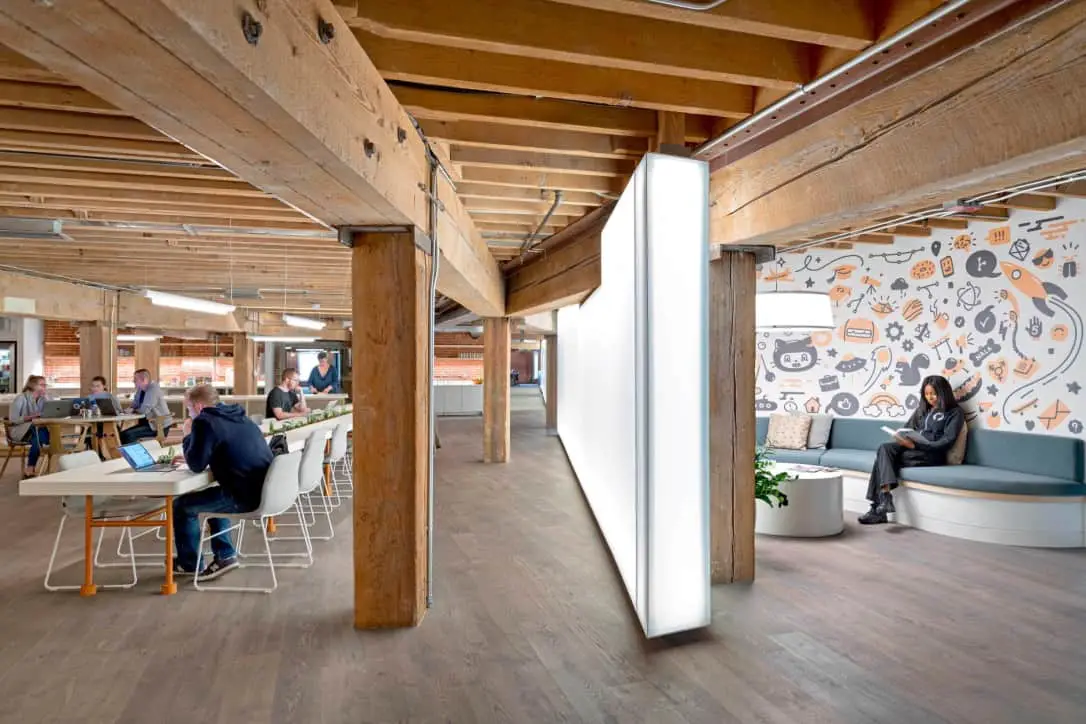The business world is chock full of talk about workplace productivity as if it’s regularly understood exactly what it is. While it seems as though the most simple definition would be a productive workplace, the truth is it is a bit more than that. Discovering the ins and outs of the topic can allow us to truly achieve it.
What is workplace productivity? Workplace productivity is the efficiency in which tasks and goals are completed for the company. By creating a productive workplace, benefits such as profitability and employee morale will be more discernable.
Having a productive workforce is an aspect of the business world that many companies struggle with. Finding the most effective ways to increase productivity and making clear the advantages of maximum productivity will create a better overall understanding of what exactly workplace productivity is.
Increasing Efficiency

Given that workplace productivity is basically completing goals in a timely manner, it is important to understand how to accomplish that without sacrificing the quality of the work. This means that in addition to being quick, employees must also be correct. It is the efficiency that cannot be ignored if maximum productivity is the aim.
In order to increase efficiency, and ultimately workplace productivity, employees can do a number of things. In today’s technological world, getting rid of distractions is one of the first necessary steps to achieving efficiency and productivity . This often means silencing personal cell phones, blocking social media from work computers, and even turning off music with lyrics.
. This often means silencing personal cell phones, blocking social media from work computers, and even turning off music with lyrics.
It is also recommended to focus on the least favorite item on your to-do list first thing in the morning. While doing the easy tasks first might seem as though you can ease into the workday, in truth, you are putting off the things that require more effort. By the end of the day, you will likely lose steam and have to put off those tasks for the following day.
That said, some people are not as productive in the mornings. It is important to identify your own most productive hours. Once those hours have been identified, scheduling tasks based on difficulty within those times will help to achieve the highest level of efficiency.
The most efficient day will not only be scheduled out, but the day will adhere to that schedule. Using a daily to-do list and a timer will allow you to ensure that no time is being wasted and the appropriate tasks are getting done at the most efficient times. If a task takes longer than scheduled for, analyze the situation and learn how to improve.
Efficiency is also hugely affected by goal setting. While a to-do list can be daily goals of sorts, other goals, such as sales reached this week, or total words written today can make noticeable positive changes. Whatever it is that your company would like to accomplish for long term reasons should be written down and truly attempted to achieve.
Although some workers feel that a break does nothing but waste time, it can actually help to clear the mind and allow working times to be better. When the brain spends so much time on a specific task without a break, it can be difficult to come up with new information or thoughts on the topic. This why a 10-15 minute break strategically placed throughout the day can help productivity.

Productivity also gets a boost when your office space is clean and properly organized. Ensuring that items are where they should not only save time from looking for it, but it can help in the thought process. When we have to stop during our most productive times in order to locate a document, we can easily post our train of thought. Getting back into the right mindset after searching for that document can be a struggle, thus a productivity killer.
is clean and properly organized. Ensuring that items are where they should not only save time from looking for it, but it can help in the thought process. When we have to stop during our most productive times in order to locate a document, we can easily post our train of thought. Getting back into the right mindset after searching for that document can be a struggle, thus a productivity killer.
Surprisingly, multitasking is not a way to improve productivity or efficiency. In fact, performing multiple tasks at once will likely diminish the quality of the work and take longer in the long run. While it may seem like so much is being accomplished, by avoiding multitasking and completing the tasks one at a time, both quality and time will be saved.
By taking the time to learn how to be more efficient, a company and its employees will discover that productivity provides benefits in numerous ways. Focusing on those benefits will help to drive change.
Advantages of Productivity in the Workplace
While some aspects of productivity are based on the industry or specific business, there are various benefits that align with the majority of companies. The obvious benefit is productivity itself – that work is actually being completed. However, the advantages are far more than just getting the job done. By seeing the benefits in a business or numerical light, anyone would be convinced of the importance of productivity.
Profit is possibly one of the most important and most convincing of benefits to productivity and efficiency. When more work is getting completed in fewer hours, less is being spent on the work itself. This means that a company can expect a higher profit.
On the other side of the business, a company will likely see that the customers are much happier with the turnaround times and overall efficiency. While some internal aspects of a business are unclear to the outside customer, there are some parts that become clear when a customer uses a company.
For example, customers might not know the ins and outs of how a product was developed, but they might see that the full process of receiving the requested product took less time than anticipated. This leads to a higher level of customer satisfaction, which in turn means more business from said customer and his or her friends.
Productivity rates also make an impact on the image of a company. From customers to shareholders and employees, high productivity often gives off the image of having it all together. However, a lower level of productivity can make it seem as though the company is not on top of things.
When productivity is high, employee morale is higher. That high morale means that employees are happier and less likely to leave for another company. Low turnover rates are key to developing good employee-manager relations. When the employees are happy, it is likely that the work will be of even higher quality.
With better work and better turnaround times, employees are creating such returns and profits that the company is better able to accommodate salary increases and benefits. Overall, this benefit translates into all aspects of the business, as employees are the center of it all. Without well trained, quality, long-term employees, it can be difficult for a business to thrive. However, by placing emphasis on the importance of these people, they will treat the company as if it is their own.
In the previous paragraphs, it has been made clear the most effective ways to increase workplace productivity and why it is in a company’s best interest to do so. By defining workplace productivity as the level of efficiency in which tasks and goals are completed for a company, it is understood that it involves both quality of work and the time it takes to complete it. By maximizing workplace productivity , a business has the ability to flourish.
, a business has the ability to flourish.
Related Questions
How can you inspire productivity in your employees? The most obvious ways to create a desire for productivity in your workforce is to create a sense of competition. While many employees prefer to work with his or her coworkers, the competition could be against a different company, department, or team.
What is the best way to handle non-productivity in the workplace? If you are unable to inspire productivity, it may be necessary to utilize quarterly reviews to inform employees of how they are performing. By using these reviews to set goals and possibly place underperforming workers on probation, the severity of the productivity issue can be made more clear.

